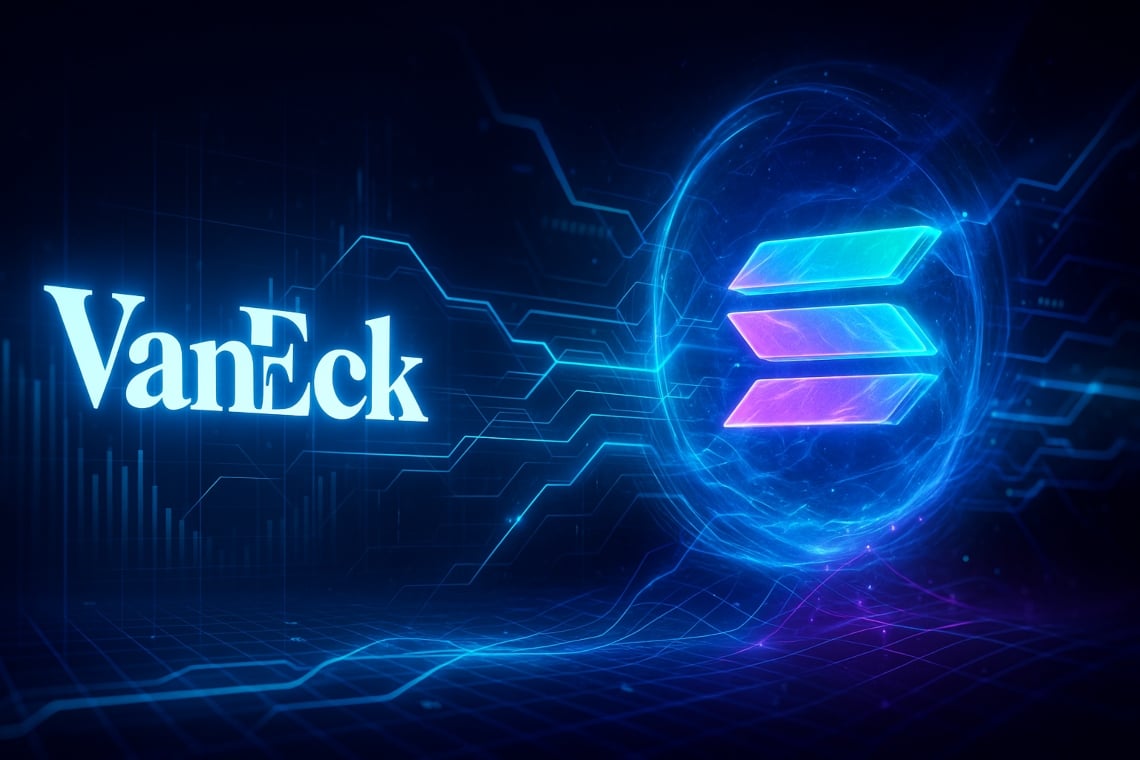sixth amendment refines custody and surveillance

VanEck filed a sixth amendment to the SEC for a spot Solana ETF on October 28, 2025, refining language on custody and surveillance to address regulator feedback.
What did VanEck file in the sixth amendment for a VanEck spot Solana filing and why does it matter?
VanEck submitted a sixth amendment that revises wording in its prospectus and supporting documents to reflect prior SEC comments. The changes are procedural but targeted, focusing on descriptions of trading surveillance, recordkeeping and how the fund would hold underlying Solana tokens.
Those phrasing adjustments are a normal part of the SEC review dialogue and signal VanEck’s intent to align its application with regulator expectations on market integrity and investor protection.
How does the sec etf review weigh investor protection, market manipulation and crypto etf custody?
The SEC’s review evaluates whether an applicant can demonstrate adequate investor protections, surveillance against manipulation and secure custody of underlying assets. Historically, the commission has pressed applicants for surveillance-sharing agreements and clear custody frameworks before approving spot crypto ETFs.
VanEck’s amendment specifically tightens language on monitoring and custody to address those points, indicating the firm is responding to the agency’s technical concerns.
In brief, the amendment narrows disclosure on custody and surveillance to address SEC concerns while keeping the application active in the agency’s ongoing review.
Why does the spot vs futures distinction matter for solana market legitimacy and diversification?
The spot vs futures distinction determines whether an ETF holds actual tokens or derivatives tied to future prices. A spot Solana ETF would hold SOL directly, offering direct price exposure and eliminating basis risk associated with futures-based products.
Approval of a spot product is often interpreted as stronger regulatory clarity and can enhance Solana market legitimacy and liquidity over time.
What benefits would a spot Solana ETF provide for accessibility, regulatory clarity, and diversification?
A spot Solana ETF could broaden access by allowing retail and institutional investors to gain exposure through brokerage accounts without self-custody. The filing highlights benefits such as accessibility, regulatory clarity, market legitimacy and diversification for portfolios that already include bitcoin or ether allocations.
Those benefits depend on the SEC’s final assessment of custody, surveillance and trading venue oversight within the broader sec etf review; ETFs can lower operational barriers but cannot eliminate protocol-level or counterparty risks.
FAQ: Will a spot solana etf improve solana institutional access and what is the approval timeline?
Will a spot Solana ETF increase solana institutional access?
Yes — if approved, a spot product would simplify institutional access by using regulated custodians and standard brokerage infrastructures. The amendment aims to show how custody and surveillance meet institutional governance needs and therefore facilitate adoption.
Note: institutional uptake also depends on custodial capacity, counterparty policies and firms’ internal risk frameworks.
What is the likely approval timeline for a spot crypto etf after this amendment?
The timeline remains uncertain; VanEck’s sixth amendment updates the record but does not establish a predictable approval date. The SEC often conducts rounds of comment and negotiation, so applicants can expect continued review before any final determination.
Quick definitions: what technical terms should investors know?
- Custody: how and where tokens are stored and who controls private keys.
- Spot vs Futures: spot means holding the actual token; futures are contracts tied to expected future prices.
- Surveillance-sharing: agreements between exchanges or market participants to detect and deter manipulation.
Tip: review custody, surveillance and counterparty disclosures closely when comparing spot crypto ETF proposals.
Legal and market experts say that tightened custody and surveillance language can materially reduce formal objections during review. As the Reuters analysis of SEC scrutiny notes, regulator focus has centered on surveillance and custody in recent crypto ETF decisions. The amendment also aligns with filing record language that, according to the SEC EDGAR filings, “clarifies custody and surveillance arrangements.”
The sixth amendment from VanEck clarifies language on custody and surveillance to address SEC concerns and to bolster the case for a direct, spot-based approach; approval remains uncertain after the filing on October 28, 2025, and the regulator will continue to evaluate investor protection and market manipulation safeguards.





